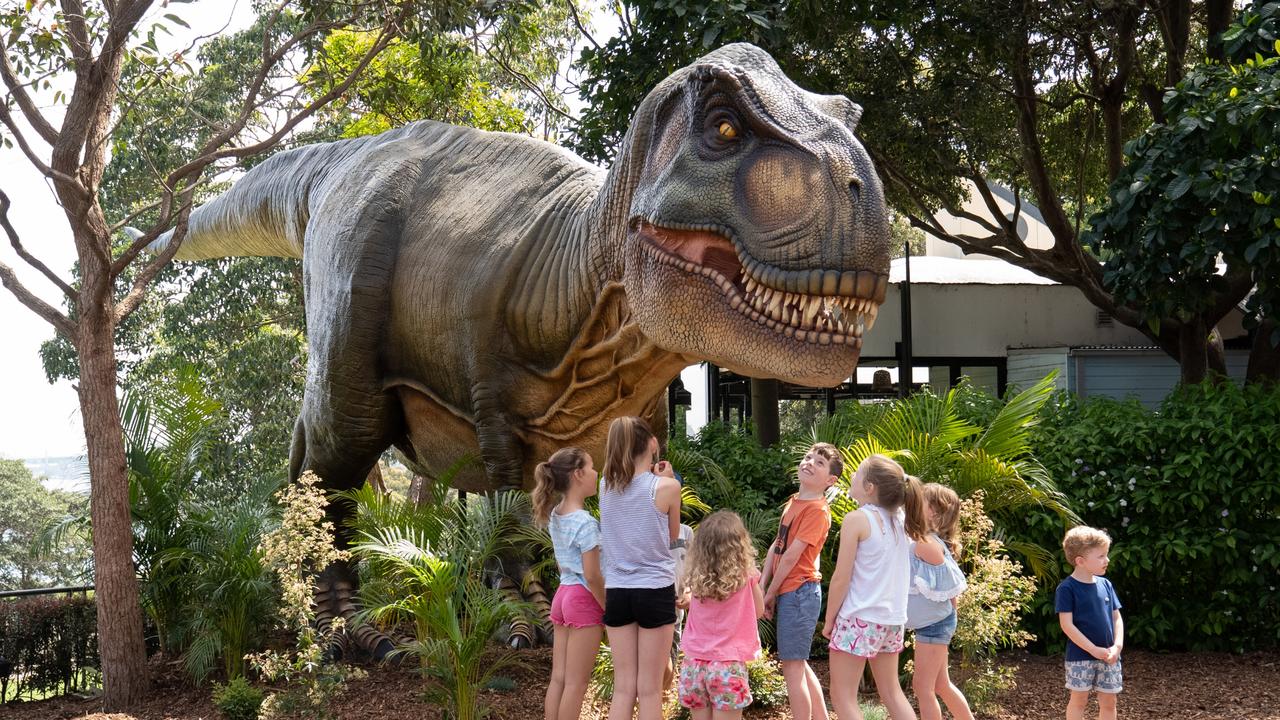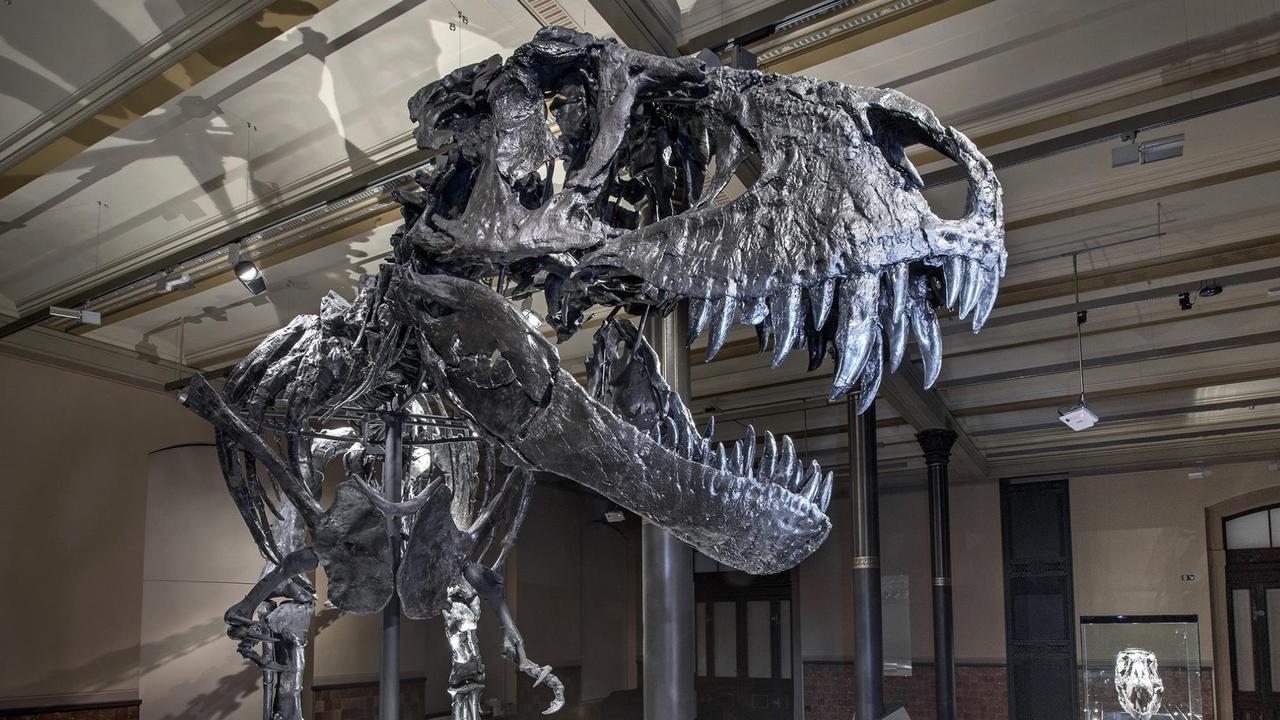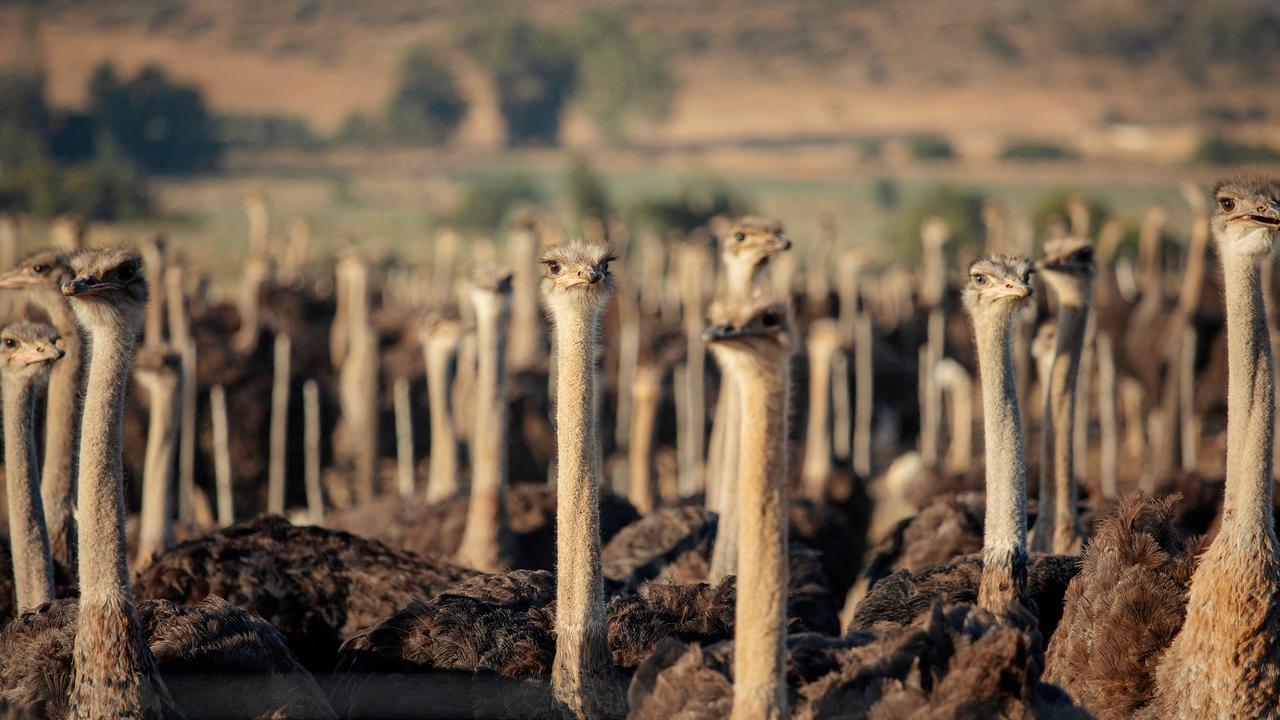Scientists lock horns over the brain power of Tyrannosaurus rex
Whether a Tyrannosaurus’ mind was as sharp as its teeth is a juicy debate, as some scientists claim the carnivore was as smart as today’s baboons, while others say brain size isn’t everything

READING LEVEL: ORANGE
Scientists have locked horns on the question of T. rex intelligence.
Two different studies have offered very different views around how smart theropods such as the Tyrannosaurus rex were when they roamed the Earth more than 66 million years ago.
The debate has largely been around how to measure an animal’s level of intelligence. While one study looked at brain size and the number of neurons, or cells, that carry messages between the brain and the rest of the body, to judge how smart the T. rex would have been, the other study considered additional factors.
The first study, by Vanderbilt University neuroscientist, Associate Professor Suzana Herculano-Houzel, came out last year and compared the brain size and number of neurons in Tyrannosaurus rex to modern day baboons, suggesting T. rex were much smarter than previously thought.

But a new study, led by zoologist Dr Kai Caspar of Heinrich Heine University in Germany, has questioned the scientific approaches used by Assoc Prof Herculano-Houzel, saying that other factors such as fossil evidence around how the dinosaurs moved and fed should also be taken into account.
Dr Caspar’s team said the animal’s anatomy and ecology as well as data from living relatives should also have been included in the study.
“Our key findings are that the brains of most dinosaurs, including T. rex, were comparable in relative size to those of living reptiles, such as crocodiles and alligators,” Dr Caspar said.
He added that T. rex probably didn’t have a large amount of neurons, even though they were massive creatures.

It’s also difficult to tell how smart an animal is by counting its neurons, he said.
First, scientists don’t know exactly how big the brains of dinosaurs were – they only know how big the skull cavity was by looking at fossils.
“While the brain fills almost the entire skull cavity in birds and us mammals, this is not the case for reptile species, the brain of which fills only about 30-50 per cent of the skull cavity,” Dr Caspar said.
Assoc Prof Herculano-Houzel’s study assumed the brain of dinosaurs such as T. rex filled the skull cavity completely – “and that was certainly not the case,” Dr Caspar said.
Secondly, there is no way of knowing for sure how densely packed the neurons were in dinosaur brains, Dr Caspar said, adding that neuron count doesn’t always give a good idea of intelligence in animals.

Assoc Prof Herculano-Houzel said she stood by her findings and called the new analysis flawed.
“The only thing that is under dispute is what already was at the time of my study: what was actually the size of dinosaur brains? Even then, we’re talking about the difference between a T. rex brain being baboon- or monkey-sized,” Assoc Prof Herculano-Houzel said.
She said the new study was based on the theory that theropods like T. rex shared their brain-to-body size relationship with crocodiles, while her study was based on the theory they had the same brain-to-body size relationship as chickens and ostriches.
But Dr Caspar said the comparison to modern birds was also part of the new study.

The dinosaurs, unlike their bird descendants, disappeared 66 million years ago after an asteroid struck Earth. Dinosaurs have been studied by scientists for 200 years and are thought to be better understood now than in the past, though plenty has remained unknown about the giant beasts.
In any case, T. rex were probably smarter than scientists previously thought, though maybe not as smart as primates like monkeys or humans, Dr Caspar said.
“What needs to be emphasised is that reptiles are certainly not as dimwitted as is commonly believed,” he said.
Co-author of the study led by Dr Caspar, University of Maryland palaeontologist Dr Thomas Holtz, said the T. rex was probably smarter than crocodiles but less intelligent than birds and mammals.

“Intelligence is one of the most difficult things to measure even in modern animals, and many of our common assumptions don’t really hold up when you actually examine what real animals do in the real world,” Dr Holtz said.
“So when we try to estimate the intelligence and cognition of ancient animals, we are going to have some difficulties. It would be nice if we could just estimate one number and unravel the whole complexity of an animal’s biology and lifestyle, but nature isn’t like that.”
POLL
GLOSSARY
- anatomy: the body and how it works
- ecology: how creatures interact with each other and their environment
- assumptions: things believed in without having solid proof
- cognition: how we learn things through our thoughts, memories, experiences and senses
- biology: the life processes of an animal or organism
EXTRA READING
Dino girl scans outback sauropods
Giant extinct kangaroos identified
Can you guess this tyrannosaur’s final meal?
QUICK QUIZ
1. How much space do reptile brains usually take up in the skull?
2. What other animals were T. rex compared with in the two different studies?
3. What are two things Dr Caspar’s team said were lacking in Assoc Prof Herculano-Houzel’s study?
4. How long ago did dinosaurs die out?
5. What is one of the most difficult things to measure in animals, according to Dr Holtz?
LISTEN TO THIS STORY
CLASSROOM ACTIVITIES
1. What could they do?
Can you think of some methods that scientists could use to try to find out how smart the T. rex was? Brainstorm as many ideas as you can think of. Be creative – no limits!
Time: allow at least 10 minutes to complete this activity
Curriculum Links: English, Science, Critical and Creative Thinking
2. Extension
Which study do you think might be more correct? Write specific reasons for your opinion. Use information in the story to help you.
Time: allow at least 20 minutes to complete this activity
Curriculum Links: English, Science
VCOP ACTIVITY
Read this!
A headline on an article – or a title on your text – should capture the attention of the audience, telling them to read this now. So choosing the perfect words for a headline or title is very important.
Create three new headlines for the events that took place in this article. Remember, what you write and how you write it will set the pace for the whole text, so make sure it matches.
Read out your headlines to a partner and discuss what the article will be about based on the headline you created. Discuss the tone and mood you set in just your few, short words. Does it do the article justice? Will it capture the audience’s attention the way you hoped? Would you want to read more?
Consider how a headline or title is similar to using short, sharp sentences throughout your text. They can be just as important as complex ones. Go through the last text you wrote and highlight any short, sharp sentences that capture the audience.

